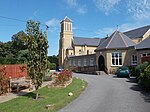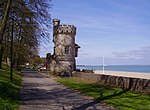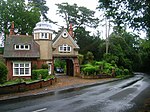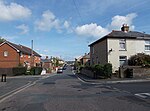Appley Towers
Commons category link is locally definedCountry houses on the Isle of WightDemolished buildings and structures on the Isle of WightFolly buildings in EnglandGrade II listed buildings on the Isle of Wight ... and 2 more
Tourist attractions on the Isle of WightUse British English from June 2015

Appley Towers, also at various times called Apley Towers or Appley Towers House was an English country house near Appley House in Appley, Isle of Wight. It was the home of the Hutt family, who bought it in the 1870s, and later of Sir Hedworth Williamson. The house has been demolished, but a number of its estate buildings survive.
Excerpt from the Wikipedia article Appley Towers (License: CC BY-SA 3.0, Authors, Images).Appley Towers
Solent Close,
Geographical coordinates (GPS) Address Nearby Places Show on map
Geographical coordinates (GPS)
| Latitude | Longitude |
|---|---|
| N 50.7238 ° | E -1.1438 ° |
Address
Solent Close 14
PO33 1NH , Appley
England, United Kingdom
Open on Google Maps







